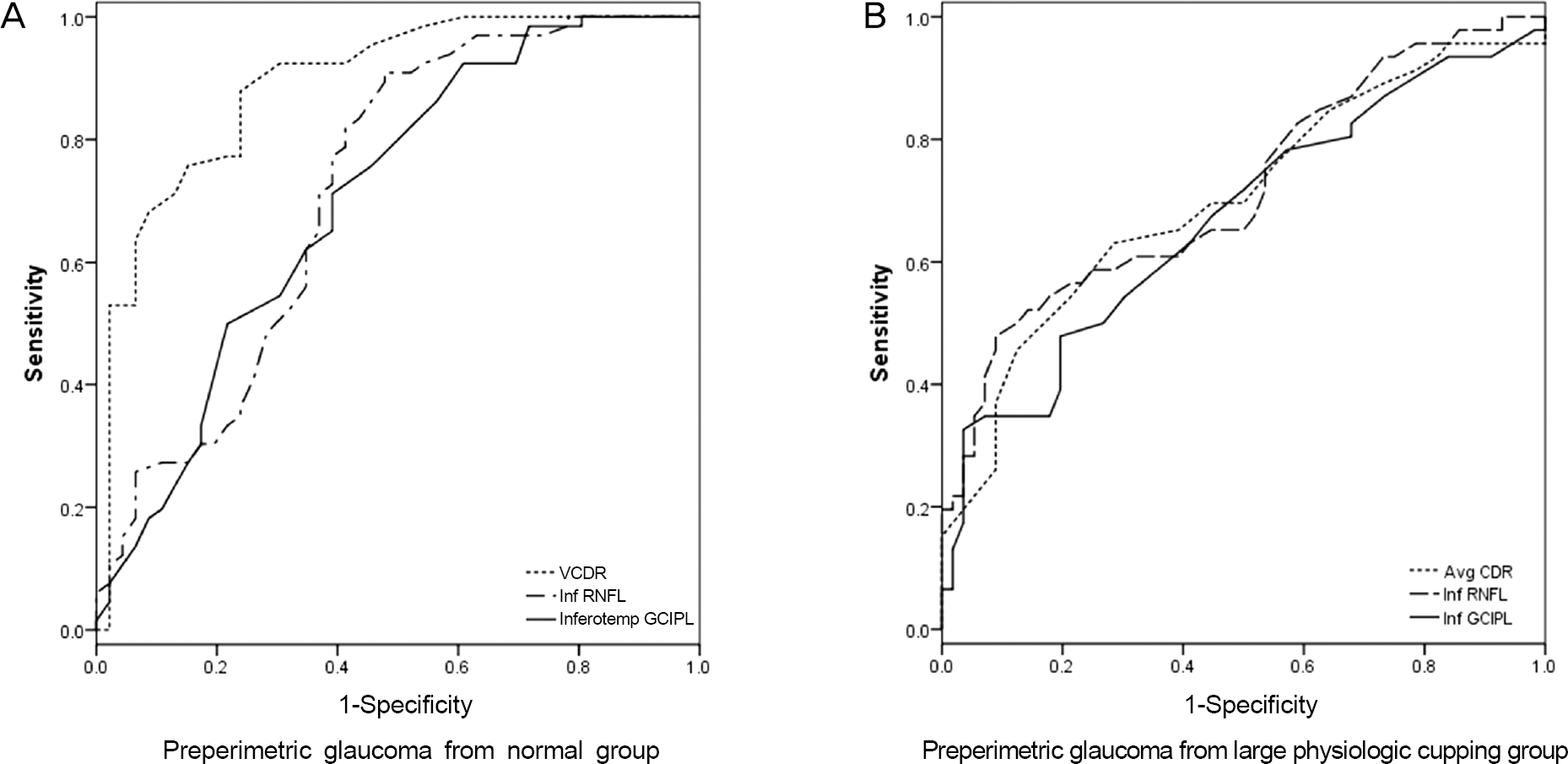1. Sommer A, Miller NR, Pollack I. . The nerve fiber layer in the diagnosis of glaucoma. Arch Ophthalmol. 1977; 95:2149–56.

2. Quigley HA, Addicks EM, Green WR. Optic nerve damage in hu-man glaucoma. III. Quantitative correlation of nerve fiber loss and visual field defect in glaucoma, ischemic neuropathy, papilledema, and toxic neuropathy. Arch Ophthalmol. 1982; 100:135–46.
3. Hayreh SS. Pathogenesis of cupping of the optic disc. Br J Ophthalmol. 1974; 58:863–76.

4. Quigley HA, Brown AE, Morrison JD, Drance SM. The size and shape of the optic disc in normal human eyes. Arch Ophthalmol. 1990; 108:51–7.

5. Carpel EF, Engstrom PF. The normal cup-disk ratio. Am J Ophthalmol. 1981; 91:588–97.

6. Armaly MF. Genetic determination of cup/disc ratio of the optic nerve. Arch Ophthalmol. 1967; 78:35–43.
7. Armaly MF, Sayegh RE. The cup-disc ratio. The findings of ton-ometry and tonography in the normal eye. Arch Ophthalmol. 1969; 82:191–6.
8. Varma R, Tielsch JM, Quigley HA. . Race-, age-, gender-, and refractive error-related differences in the normal optic disc. Arch Ophthalmol. 1994; 112:1068–76.

9. Garvin MK, Abràmoff MD, Wu X. . Automated 3-D intra-retinal layer segmentation of macular spectral-domain optical co-herence tomography images. IEEE Trans Med Imaging. 2009; 28:1436–47.

10. Bagga H, Feuer WJ, Greenfield DS. Detection of psychophysical and structural injury in eyes with glaucomatous optic neuropathy and normal standard automated perimetry. Arch Ophthalmol. 2006; 124:169–76.

11. Jonas JB, Gusek GC, Naumann GO. Optic disc, cup and neuro-retinal rim size, configuration and correlations in normal eyes. Invest Ophthalmol Vis Sci. 1988; 29:1151–8.
12. Mwanza JC, Durbin MK, Budenz DL. . Profile and predictors of normal ganglion cell-inner plexiform layer thickness measured with frequency-domain optical coherence tomography. Invest Ophthalmol Vis Sci. 2011; 52:7872–9.

13. Kim NR, Lee ES, Seong GJ. . Spectral-domain optical coher-ence tomography for detection of localized retinal nerve fiber layer defects in patients with open-angle glaucoma. Arch Ophthalmol. 2010; 128:1121–8.

14. Hanley JA, McNeil BJ. A method of comparing the areas under re-ceiver operating characteristic curves derived from the same cases. Radiology. 1983; 148:839–43.

15. Knight OJ, Chang RT, Feuer WJ, Budenz DL. Comparison of reti-nal nerve fiber layer measurements using time domain and spectral domain optical coherent tomography. Ophthalmology. 2009; 116:1271–7.

16. Sung KR, Kim DY, Park SB, Kook MS. Comparison of retinal nerve fiber layer thickness measured by Cirrus HD and Stratus op-tical coherence tomography. Ophthalmology. 2009; 116:1264–70. 1270.e1.

17. Tan O, Chopra V, Lu AT. . Detection of macular ganglion cell loss in glaucoma by Fourier-domain optical coherence tomography. Ophthalmology. 2009; 116:2305–14.e1-2.

18. Na JH, Lee K, Lee JR. . Detection of macular ganglion cell loss in preperimetric glaucoma patients with localized retinal nerve fi-bre defects by spectral-domain optical coherence tomography. Clin Experiment Ophthalmol. 2013; 41:870–80.

19. Jeoung JW, Park KH. Comparison of Cirrus OCT and Stratus OCT on the ability to detect localized retinal nerve fiber layer defects in preperimetric glaucoma. Invest Ophthalmol Vis Sci. 2010; 51:938–45.

20. Hirashima T, Hangai M, Nukada M. . Frequency-doubling technology and retinal measurements with spectral-domain optical coherence tomography in preperimetric glaucoma. Graefes Arch Clin Exp Ophthalmol. 2013; 251:129–37.

21. Rao HL, Kumbar T, Addepalli UK. . Effect of spectrum bias on the diagnostic accuracy of spectral-domain optical coherence to-mography in glaucoma. Invest Ophthalmol Vis Sci. 2012; 53:1058–65.

22. Rao HL, Addepalli UK, Chaudhary S. . Ability of different scanning protocols of spectral domain optical coherence tomog-raphy to diagnose preperimetric glaucoma. Invest Ophthalmol Vis Sci. 2013; 54:7252–7.

23. Lisboa R, Paranhos A Jr, Weinreb RN. . Comparison of differ-ent spectral domain OCT scanning protocols for diagnosing pre-perimetric glaucoma. Invest Ophthalmol Vis Sci. 2013; 54:3417–25.

24. Leite MT, Rao HL, Zangwill LM. . Comparison of the diag-nostic accuracies of the Spectralis, Cirrus, and RTVue optical co-herence tomography devices in glaucoma. Ophthalmology. 2011; 118:1334–9.

25. Savini G, Carbonelli M, Barboni P. Retinal nerve fiber layer thick-ness measurement by Fourier-domain optical coherence tomog-raphy: a comparison between cirrus-HD OCT and RTVue in healthy eyes. J Glaucoma. 2010; 19:369–72.

26. Buchser NM, Wollstein G, Ishikawa H. . Comparison of retinal nerve fiber layer thickness measurement bias and imprecision across three spectral-domain optical coherence tomography devices. Invest Ophthalmol Vis Sci. 2012; 53:3742–7.






 PDF
PDF ePub
ePub Citation
Citation Print
Print


 XML Download
XML Download